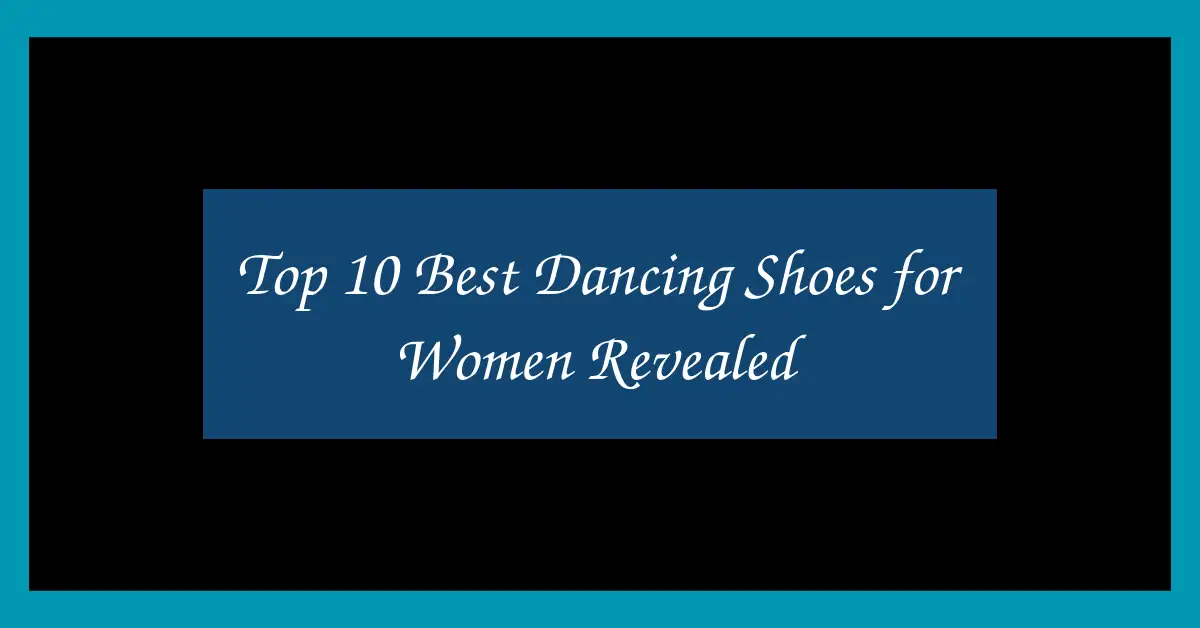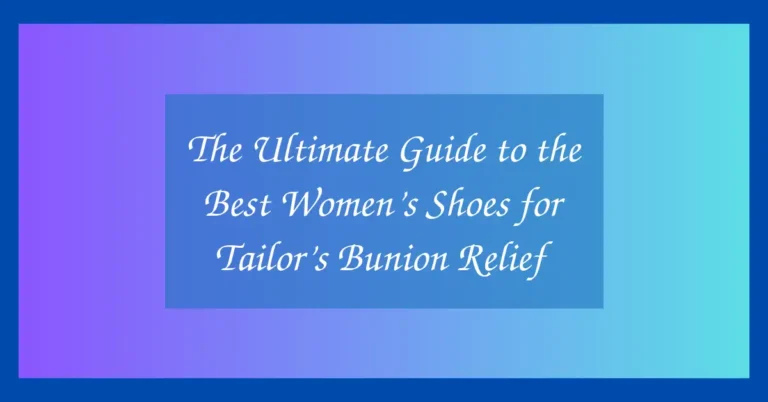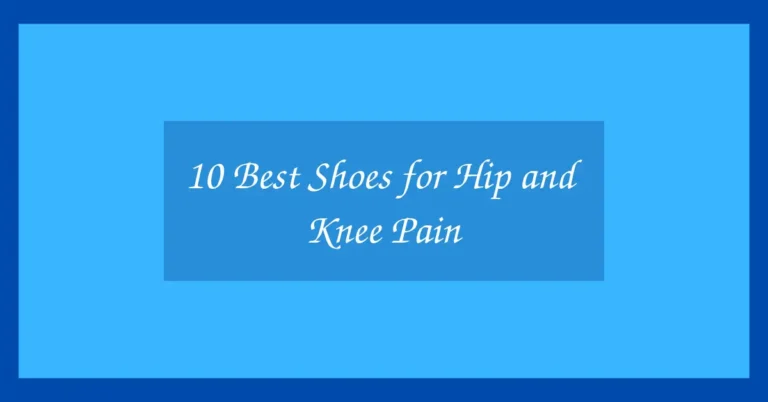Top 10 Best Dancing Shoes for Women Revealed
Selecting the right dancing shoes is not just about style; it’s crucial for ensuring safety, comfort, and optimal performance on the dance floor. For dancers, the footwear plays a pivotal role in every movement, from ballet spins to salsa steps. The right pair reduces the risk of injuries, provides necessary support, and enhances the dancer’s ability to execute precise movements.
This guide explores the essential criteria to consider when choosing the best dancing shoes for women, ensuring that every dancer can find a pair that feels like a natural extension of their body. As we delve into the specifics, remember that the perfect dance shoe can make all the difference in your dancing journey, helping you perform your best while protecting your feet.
Top 10 Shoe Reviews: Best Dancing Shoes for Women
Table of Contents
Toggle1. Capezio Women’s DS11 Fierce Dansneaker
The Capezio Women’s DS11 Fierce Dansneaker is an exemplary choice for dancers who need a shoe that matches the intensity of their routines. Designed for a variety of dance styles, from hip-hop to jazz, these sneakers offer exceptional versatility. The upper part of the shoe is made from a combination of synthetic materials and mesh, providing both durability and breathability. The split-sole design enhances flexibility and allows for a wide range of movements, which is crucial during complex choreographies.
The padded tongue and collar add extra comfort, reducing the risk of irritation during extended wear. Moreover, the built-in arch support system caters to the needs of dancers who require additional foot support, making long rehearsals more manageable.
Pros:
-
Versatile design suitable for multiple dance styles.
-
Breathable mesh and durable synthetic upper.
-
Enhanced flexibility with a split-sole design.
-
Good arch support for extended wear.
-
Non-marking PU outsole with built-in patented flex points.
Cons:
-
May run small, requiring a size adjustment.
-
Limited color options available.
-
The thicker sole may not be ideal for dancers preferring more ground contact.
2. Bloch Dance Women’s Boost DRT Suede and Mesh Split Sole Dance Sneaker
Bloch’s Boost DRT Dance Sneaker is a game-changer for dancers prioritizing both function and form. The shoe boasts a lightweight design that doesn’t skimp on support, featuring a variable lacing system for an optimized fit. The suede and mesh upper ensures the sneakers are not only breathable but also robust enough to handle vigorous routines.
One of the standout features is the high-density Boost heel technology, which provides superb shock absorption, minimizing the impact on joints during high-energy routines. The pivot point on the sole makes turning effortless and precise, which is essential for styles like salsa and ballroom. The thick cushioning around the ankle and underfoot adds a layer of comfort that is appreciable during longer sessions.
Pros:
-
High-density Boost heel technology for excellent shock absorption.
-
Lightweight and breathable materials.
-
Effective pivot point for improved turning.
-
Comfortable cushioning in key areas.
-
Adjustable lacing for a custom fit.
Cons:
-
May not provide enough grip on very smooth surfaces.
-
Higher price point might not suit all budgets.
-
Some users may find the aesthetic bulkier than traditional dance shoes.
3. Sansha Salsette 1 Jazz Sneaker
The Sansha Salsette 1 Jazz Sneaker stands out with its stylish yet functional design, making it a popular choice among jazz and contemporary dancers. This shoe merges the flexibility of a ballet slipper with the durability of a street shoe. The mesh upper part is exceptionally breathable, which keeps feet cool under harsh studio lights or during outdoor performances. The suede sole not only offers adequate grip on various surfaces but also allows for smooth gliding movements.
The low-profile design aids in maintaining a sleek look without sacrificing any comfort, thanks to the padded insole and supportive arch. These sneakers are also lightweight, which helps in maintaining stamina during long practices or performances.
Pros:
-
Extremely lightweight and flexible.
-
Breathable mesh upper keeps feet cool.
-
Suede sole provides the right amount of grip.
-
Stylish low-profile design.
-
Suitable for indoor and outdoor use.
Cons:
-
Sizing can be tricky; often requires going a size up.
-
Not ideal for those needing very firm arch support.
-
The thin sole may wear out quicker on rough surfaces.
4. Nike Women’s Free TR 8 Athletic Trainer
Nike Women’s Free TR 8 Athletic Trainer is engineered for those who cross-train but is equally apt for dance practices. Its lightweight mesh upper and durable synthetic overlays provide breathable support that adapts to dynamic movements. The shoe features a unique 3-D printing on the mesh that enhances durability without adding weight, which is critical in maintaining foot agility.
The innovative lace-up closure ensures a secure fit, while the foam midsole with a firm heel counter offers plush cushioning and stability. Additionally, the flex grooves on the sole allow the foot to move naturally, which is essential for dances that involve a wide range of motions.
Pros:
-
Dynamic fit with breathable support.
-
Lightweight design with durable materials.
-
Enhanced cushioning and stability.
-
Flex grooves allow natural foot movement.
-
Stylish and modern aesthetic.
Cons:
-
Not specifically designed for any particular dance style.
-
May not provide enough lateral support for intense dance routines.
-
Limited color and design options may not appeal to all dancers.
5. Adidas Women’s Cloudfoam Pure Running Shoe
While primarily designed for running, the Adidas Women’s Cloudfoam Pure Running Shoe is a favorite among dancers who prefer a minimalist design with maximum comfort. The shoe’s Cloudfoam memory sockliner and textile lining offer plush cushioning that molds to the foot for superior comfort during movements.
The lightweight, breathable upper ensures feet stay cool and dry, making it suitable for energetic routines. Its simple slip-on design coupled with aesthetic versatility makes it a practical choice for both dance practice and casual wear. The combined midsole and outsole provide excellent grip and durability, reducing wear and tear from dance-related movements.
Pros:
-
Exceptional comfort with Cloudfoam cushioning.
-
Lightweight and breathable material.
-
Versatile design suitable for dance and casual wear.
-
Easy slip-on style.
-
Durable combined midsole and outsole.
Cons:
-
Not specifically tailored for any dance style.
-
Some might find the cushioning too soft for dance.
-
The minimalist design may lack necessary support for more technical moves.
6. Reebok Women’s Guresu 2.0 Dance Shoe
Reebok’s Guresu 2.0 Dance Shoe is tailored for the dynamic needs of modern dance styles, offering a perfect blend of performance and style. The shoe features a bootie design with a synthetic neoprene collar, providing a secure fit that supports swift and complex movements.
Its lightweight cushioning is comfortable yet responsive, ensuring dancers can perform at their peak without feeling weighed down. The turn zone design optimizes the outsole for smoother pivoting, crucial for genres like jazz and street dance. Its integrated lacing system minimizes in-shoe movement, reinforcing stability during high-intensity routines.
Pros:
-
Secure bootie construction with a snug fit.
-
Lightweight cushioning for optimal responsiveness.
-
Turn zone design aids in effortless pivoting.
-
Stylish, modern look with practical functionality.
-
Durable outsole suitable for various dance surfaces.
Cons:
-
May not fit as well on wider feet.
-
Limited color options.
-
The upper may lack ventilation compared to other mesh designs.
7. ASICS Women’s Gel-Fit Sana 4 Cross Trainer
The ASICS Gel-Fit Sana 4 Cross Trainer is engineered for cross-training but excels in dance environments, particularly in studios and during performances. It features a MONO-SOCK® fit system that replaces a traditional tongue for a sock-like fit, enhancing both comfort and support.
The rearfoot GEL® technology cushioning system absorbs shock and allows for a smoother transition in dance movements, making it ideal for high-impact routines. The flexibility of the shoe is bolstered by the lightweight, flexible midsole, which supports natural foot movements essential in contemporary and ballet dance styles.
Pros:
-
MONO-SOCK® fit system for a secure, sock-like feel.
-
Rearfoot GEL® technology provides excellent shock absorption.
-
Highly flexible midsole supports natural foot movement.
-
Lightweight and streamlined design.
-
Suitable for a variety of dance and athletic activities.
Cons:
-
Minimal arch support might not suit all dancers.
-
The sleek design might not provide enough lateral stability for some.
-
Limited durability under extreme wear.
8. Puma Women’s Tazon 6 WN’s FM Cross-Trainer Shoe
Puma’s Tazon 6 WN’s FM Cross-Trainer Shoe is a robust option for dancers looking for superior support and durability. The shoe features a synthetic leather upper with a midfoot saddle for optimum fit and comfort, and the EVA in the heel absorbs impact superbly, protecting the foot during high-energy dances.
The streamlined silhouette ensures that style doesn’t sacrifice functionality, making it a favorite among hip-hop and street dancers. Its rubber outsole offers reliable traction on both indoor and outdoor surfaces, adding to its versatility.
Pros:
-
Durable synthetic leather upper.
-
EVA heel pod offers impact absorption.
-
Midfoot saddle ensures a secure fit.
-
Stylish yet functional design.
-
Versatile traction suitable for various dance environments.
Cons:
-
Heavier than other dance-specific shoes.
-
Not as breathable as mesh counterparts.
-
The fit may be too snug for users with broader feet.
9. New Balance Women’s 577 V4 Cross Trainer
The New Balance 577 V4 Cross Trainer is a solid all-rounder, designed to support a range of physical activities including dance. Its leather upper provides durability while the breathable mesh inserts keep feet cool during vigorous routines. The CUSH+ midsole offers exceptional cushioning without sacrificing stability, essential for intricate footwork and repetitive movements.
The non-marking outsole is perfect for studio floors, providing grip without leaving scuffs. Its aesthetic is functional and straightforward, focusing on performance over appearance.
Pros:
-
Durable leather upper with breathable features.
-
CUSH+ midsole delivers superior cushioning and comfort.
-
Non-marking outsole ideal for studio environments.
-
Provides excellent traction and stability.
-
Simple, performance-oriented design.
Cons:
-
Less flexible compared to other dance shoes.
-
Aesthetic may be too plain for some dancers.
-
Slightly heavier build could impact agility.
10. Ryka Women’s Influence Cross Training Shoe Trainer
Ryka’s Influence Cross Training Shoe is specifically designed with the female dancer in mind, offering tailored support and functionality. It features a dual-density foam midsole with high impact N-Gage EVA energy return, which provides shape retention and cushioning on impact.
The traction outsole with a footprint design is tailored for controlled flexibility and a stable feel, making it ideal for dance classes that involve complex choreography. The ergonomic design includes a lace-up front for a secure fit and a pivot point that enhances mobility and ease of rotation.
Pros:
-
Designed specifically for women, offering excellent fit.
-
High impact N-Gage EVA for superior cushioning.
-
Ergonomic sole with pivot points for enhanced movement.
-
Secure lace-up front.
-
Stylish design with functional performance.
Cons:
-
May take time to break in.
-
Limited color options.
-
The sole’s durability may be an issue with very frequent use.
Buyer’s Guide
1. Comfort and Fit
The foremost consideration should be comfort and fit. A good dancing shoe should fit snugly without causing discomfort. Look for adjustable straps or laces which can help in achieving a better fit. The shoes should also allow enough room for toe movement but shouldn’t be loose, as this could lead to blisters and instability during fast movements.
2. Material
The material of the shoe affects both its durability and how it conforms to your foot. Leather is a popular choice due to its durability and ability to stretch and mold to the foot over time, offering a custom fit. Synthetic materials can be lighter and sometimes more breathable but may not last as long. Mesh sections can provide additional breathability which is beneficial for long sessions.
3. Sole Type
The type of sole is crucial and depends largely on the dance style. For example, ballet and modern dance often require soft suede soles for maximum flexibility and a good grip on smooth surfaces. In contrast, street and tap dancing shoes have harder soles. Look for soles that provide enough grip to prevent slipping, but also allow you to glide and pivot freely.
4. Heel Height and Shape
Heel height can vary greatly depending on the dance style. Latin and ballroom shoes typically have higher heels, which help in maintaining posture and balance during intricate footwork. However, a lower heel might be preferable for more strenuous dances like hip-hop or jazz to ensure better stability.
5. Arch Support
Good arch support is vital, especially if you have specific foot conditions such as flat feet. Proper arch support will help distribute weight evenly, reducing fatigue and preventing injuries.
6. Flexibility and Durability
A balance between flexibility and durability is key. While the shoe must be flexible enough to allow for intricate footwork, it should also be sturdy enough to withstand wear and tear. Pay attention to the stitching and construction quality to ensure longevity.
7. Aesthetic and Personal Style
While performance and comfort are paramount, the appearance of the shoes can also boost a dancer’s confidence. Choose a style and color that reflects your personal taste and complements your dance outfits.
FAQ
-
What are the best types of shoes for salsa dancing?
-
Salsa shoes are typically lightweight with a suede sole to facilitate smooth spins and turns while providing enough grip to maintain control. They often feature a flared heel ranging from 1.5 to 3 inches to enhance stability and aesthetic appeal.
-
How often should I replace my dancing shoes?
-
The lifespan of dancing shoes can vary based on how frequently they are used, the dance surface, and the shoe quality. Generally, replace your dance shoes when you notice significant wear in the sole or when they no longer provide adequate support.
-
Can I wear regular sneakers for dance classes?
-
While regular sneakers can be used for some beginner classes, dedicated dance shoes are recommended for most styles to avoid injuries and facilitate proper technique. Dance-specific sneakers have split soles and smoother bottoms to allow for easier spins and turns.
-
What features should I look for in a tap shoe?
-
Good tap shoes should have a firm sole and a well-mounted tap plate that resonates well. They should fit snugly to prevent any movement of the foot inside the shoe, which could lead to missteps and injuries.
-
Is it important for ballet shoes to have elastic bands?
-
Yes, elastic bands help secure the shoe to the foot, ensuring it doesn’t slip off during movements. They also aid in distributing the tension evenly around the foot, enhancing both comfort and functionality.
-
How can I make my dance shoes last longer?
-
To extend the life of your dance shoes, use them exclusively for dancing and avoid wearing them outside. Clean them regularly, and store them in a cool, dry place. Consider having multiple pairs to rotate between if you dance frequently.
-
What should I avoid when choosing dancing shoes?
-
Avoid shoes that are too rigid, lack sufficient grip, or do not fit properly. These can all lead to discomfort, impaired performance, or even injuries. It’s also wise to avoid materials that do not breathe well, as this can lead to overheating and excessive sweating during dance sessions.
Conclusion
Choosing the right dancing shoes is essential for both safety and performance. A suitable pair enhances a dancer’s ability to execute movements, reduces the risk of injury, and ensures comfort during practice or performance. The reviewed shoes highlight the variety of options available that meet these needs, ensuring every dancer can find shoes that suit their style and requirements.






